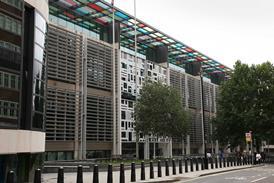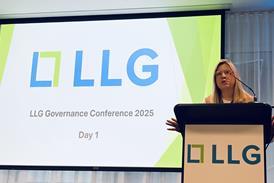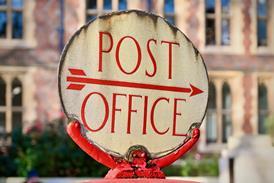The government has announced that it will be reducing the top rate of tax from 50% to 45% for those on incomes over £150,000. This change, along with forthcoming changes to pensions contribution reliefs, means that you should review the reliefs on offer to make sure you’re minimising your tax liabilities as much as possible.
Changes to pension contribution reliefs
Tax relief on pension contributions is currently restricted to an annual maximum allowance of contributions of £50,000 gross (£40,000 net) per year.
Relief will be given at your highest marginal rate and you should look to maximise your pension contributions in 2012/13 if you will be paying tax at 50%. All contributions must be paid before 5 April 2013 for relief to be given in this tax year.
The annual allowance applies to contributions paid in a pension scheme’s input period. It’s important to note that each pension scheme has a different input period, which may not necessarily coincide with the tax year.
You can potentially carry forward any unused annual pension contribution allowance from the previous three tax years, as long as you had a pension fund in those years. Doing this will increase the amount you’re able to contribute and claim tax relief on in this tax year, so it would be prudent to review your previous years’ pension contributions to see whether there is any allowance you can use by 5 April 2013.
If you’re planning to use unused allowance, it’s important to find out the date of your pension scheme’s input period. If it doesn’t end on 5 April with the tax year, this could potentially cause problems with calculating the timing of your contributions. It is worthwhile consulting your financial adviser about the best way to time your pension contributions within the tax year.
You won’t be able to claim tax relief on contributions paid above the annual allowance. The lifetime allowance remains at £1.5m for this year.
Changes to pension contribution reliefs are coming over the next few years. From 6 April 2014 the annual allowance for tax relief on pension savings will reduce from £50,000 gross to £40,000 gross (£32,000 net) per year, with the lifetime allowance to reduce to £1.25m. A transitional fixed protection regime will be introduced for those who believe they may be affected by the reduction in the lifetime allowance.
Making the most of your Gift Aid donations
Many know that charities get back basic-rate tax relief from the government on donations made through the Gift Aid scheme. What is less well-known is that higher-rate taxpayers are entitled to further tax relief on their Gift Aid donations when claimed on their tax return.
High earners can get 50% tax relief on their donations in this tax year, which might motivate some to be more generous, and others to be better at recording the Gift Aid donations they make.
In view of the reduction in the top rate of tax to 45% in 2013/14, you may wish consider making more than one year’s worth of regular donations in the current tax year. There is also scope to carry back Gift Aid donations made in a subsequent tax year, up until the date your tax return for the year being carried back to is submitted.
Alternatively, it may be worthwhile setting up a Charities Aid Foundation (CAF) or similar account and making a lump sum payment into the account to fund future donations. Payments to a CAF account will receive Gift Aid tax relief when paid, rather than when the funds in the account are paid out to individual charities.
Tax relief on investments
If you are looking to invest, there are a number of schemes available, particularly for investment in new or start-up businesses that attract favourable tax reliefs.
Investment in shares that qualify for the Enterprise Investment Scheme (EIS) and Seed Enterprise Investment Scheme (SEIS) are tax-favoured investments. Income tax relief of 30% is available on EIS investments of up to £1m each year and 50% on SEIS investments of up to £100,000 per investor, with additional capital gains tax and inheritance tax benefits.
SEIS is new for 2012/13 and may be of limited importance as each qualifying company will only be able to receive investments totalling £150,000 from the scheme.
Investments in venture capital trusts of up to £200,000 each tax year generate 30% income tax relief and benefit from capital gains tax exemption after a qualifying period. There are some interesting and diverse investment opportunities within these arrangements which you should explore in full before making an investment.
Capital gains tax
There are a few aspects to consider regarding capital gains tax, particularly around the sale of property and transfer of assets between spouses.
Each of us has an annual capital gains tax allowance of £10,600, which entitles us to gains of £10,600 in each tax year. As spouses can transfer assets between themselves without attracting capital gains tax, it’s possible to realise gains of £21,200 tax free by transferring assets to your spouse.
If you have sold or are selling a property, it’s worthwhile looking at the exemptions around capital gains. A capital gain on selling your sole home is tax free if it and its grounds do not exceed half a hectare. If you have two residences (for example, a midweek flat or weekend cottage) together with the main home, the main home will still be exempt from capital gains tax.
However, dual exemption for a period can be engineered on more than one residence where an election is made within two years of acquiring the second residence. If this applies to you, speak to your tax adviser to explore your options.
With a range of exemptions and reliefs on offer, it’s worth investigating the options that apply to your personal and business circumstances to ensure you aren’t paying more tax than is correctly due. As part of your fiscal year-end preparations, it’s worthwhile assessing your situation and, if appropriate, speaking to both a tax and financial adviser to ensure your tax matters are in order before the 5 April deadline.
Louis Baker, is partner at national tax, audit and advisory firm Crowe Clark Whitehill



























No comments yet